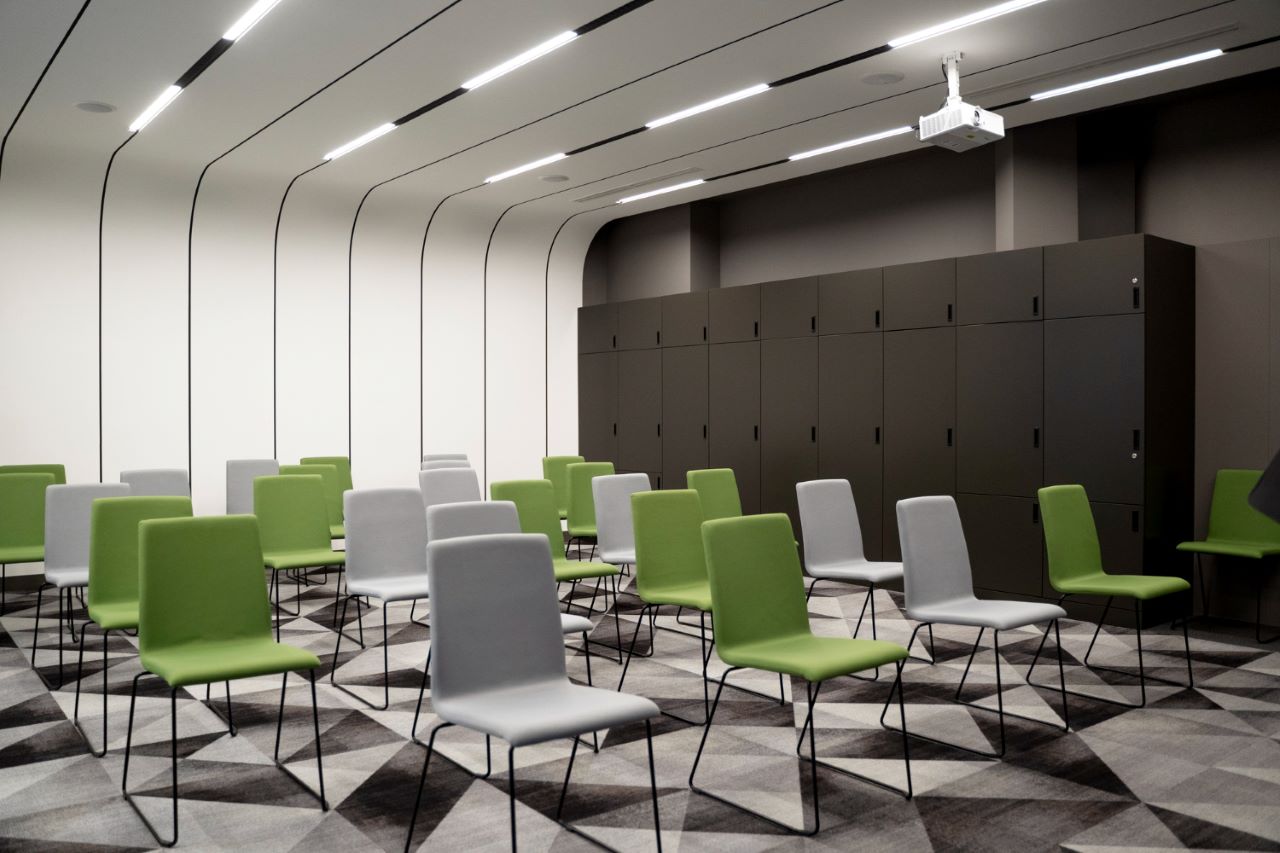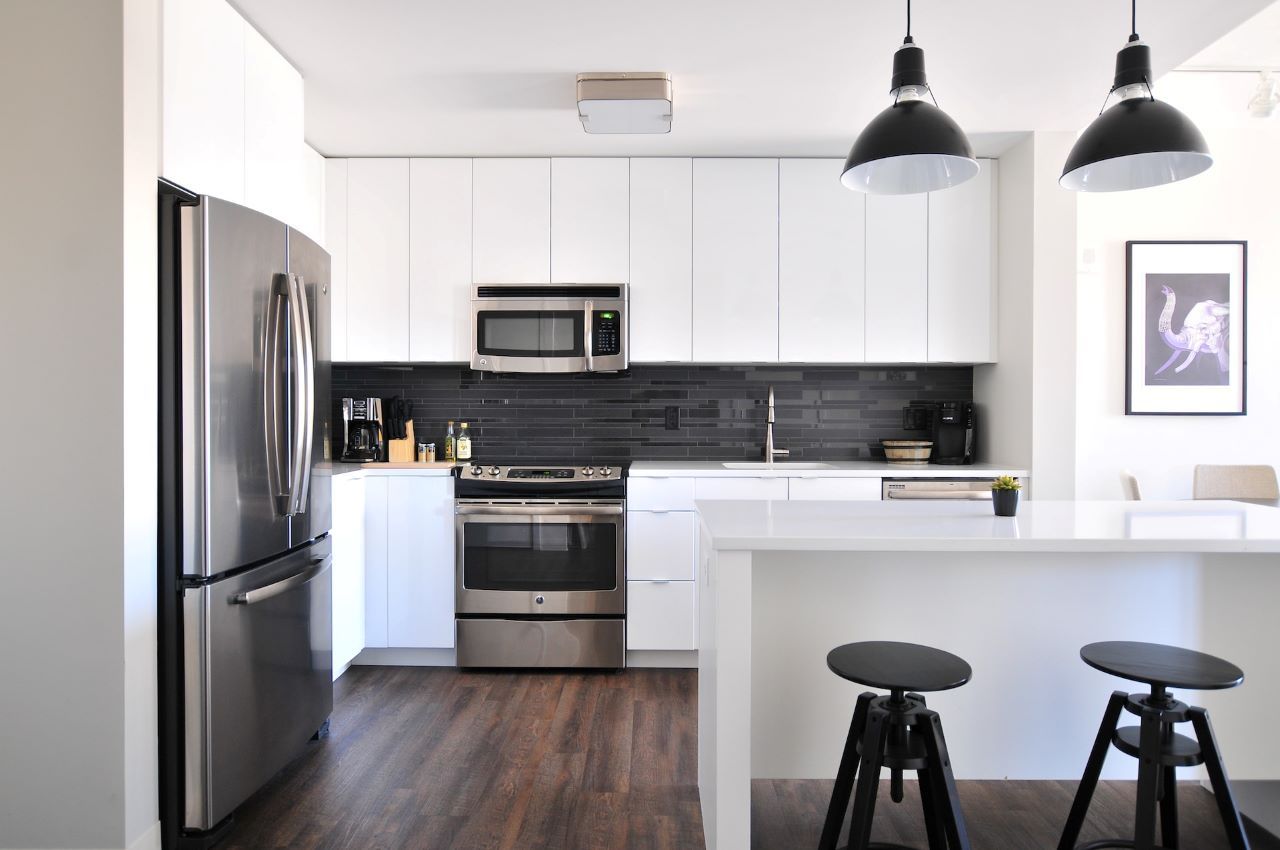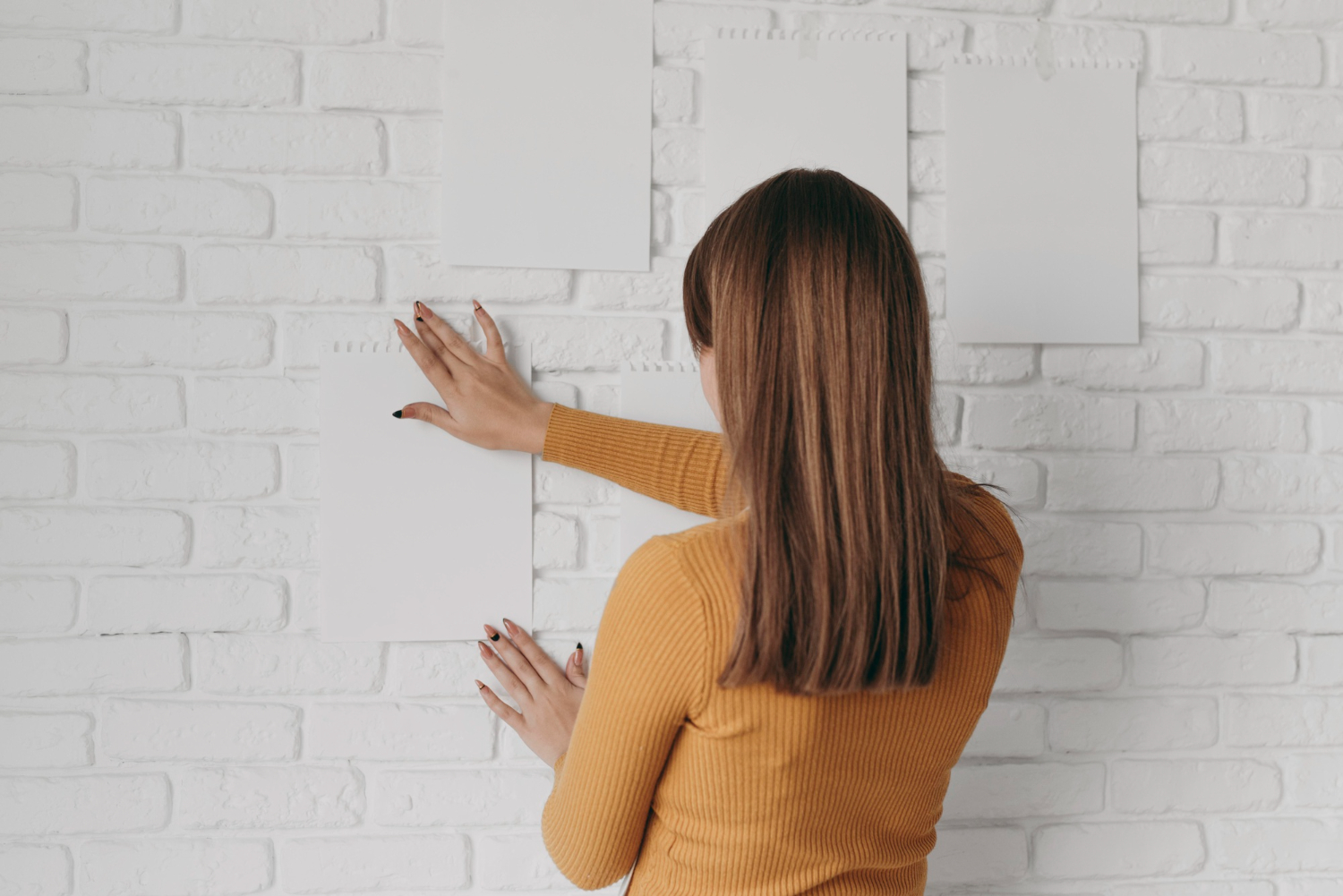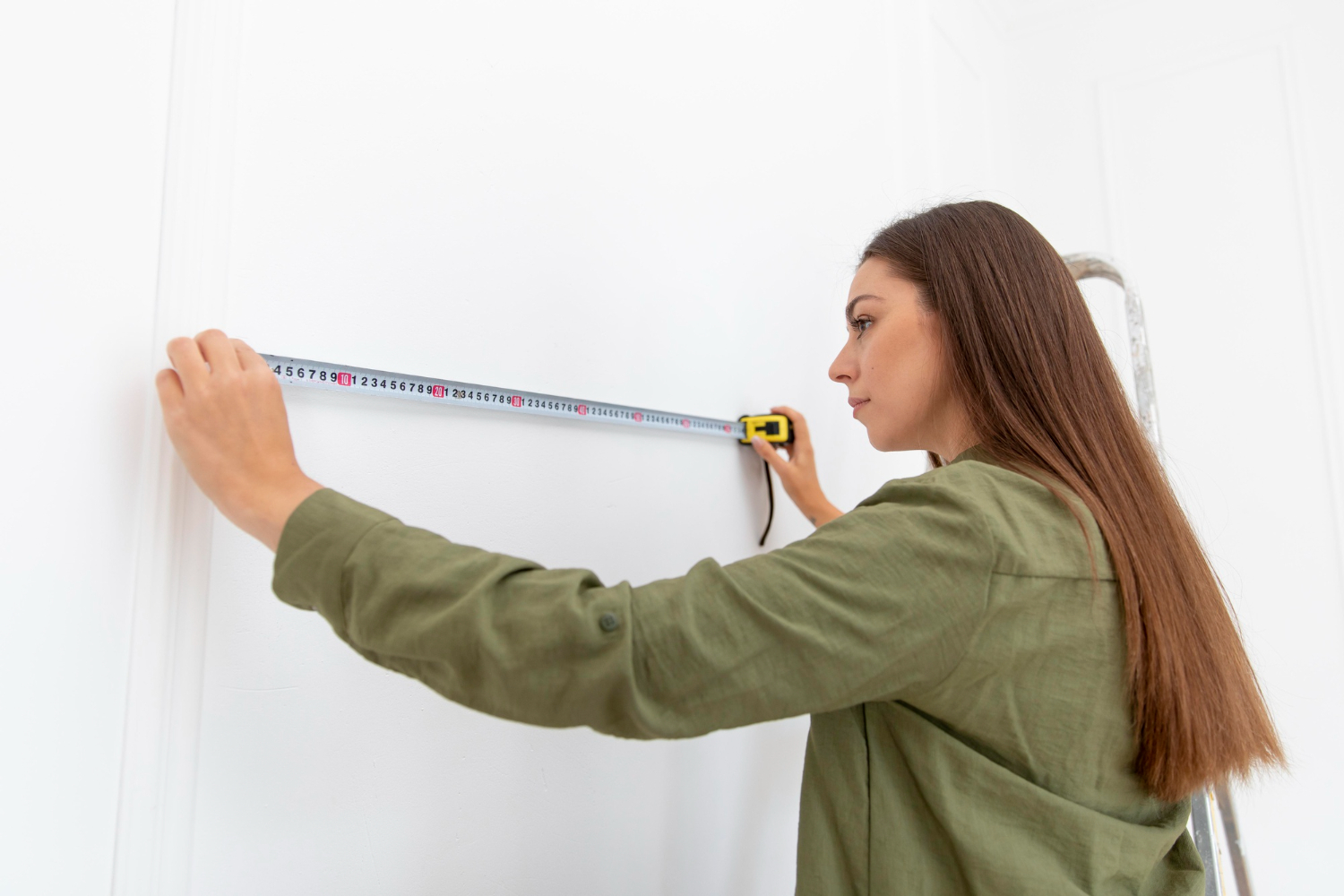In the hustle and bustle of everyday life, finding a moment of peace and quiet can feel like a luxury. Whether it’s the hum of city traffic, the buzz of household appliances, or the echo of voices in a shared living space, noise can be an uninvited guest in our homes. This is where DIY sound-dampening panels come into play, offering a practical and creative solution to manage and reduce unwanted noise.
In this article, we’ll embark on a journey to explore the world of DIY sound-dampening panels. From understanding the basics of soundproofing to diving into the nitty-gritty of materials and tools required, we aim to guide you through each step of creating your own acoustic panels. Not only will this enhance the acoustic comfort of your space, but it also adds a personal touch to your home decor.
Whether you’re a seasoned DIY enthusiast or a beginner eager to tackle a new project of podcasting, this guide is designed to be your companion in achieving a quieter and more serene living environment. So, let’s roll up our sleeves and delve into the world of sound dampening, where tranquility meets creativity.
Contents
Materials And Tools Required For DIY Sound Dampening Panels
Embarking on the journey of creating DIY sound-dampening panels begins with gathering the right materials and tools. This process is not just about assembling items but understanding how each component contributes to the effectiveness of your soundproofing project.
Types Of Sound-Dampening Materials

Image by wirestock on Freepik
The core of any sound-dampening panel is the material that absorbs and mitigates noise. Let’s explore some of the most effective materials you can use.
Fiberglass
Fiberglass, a staple in the soundproofing world, is revered for its exceptional sound absorption qualities. This material is composed of extremely fine fibers of glass woven into a lightweight yet dense mat. The key to its effectiveness lies in its structure; the tiny interstices between the fibers create a labyrinth that traps and dissipates sound waves, significantly reducing noise transmission and echoes.
Types of Fiberglass Insulation
- Batts and Rolls: These are large pieces of fiberglass, available in various thicknesses and densities. They are typically used in walls and ceilings and can be cut to fit any space.
- Loose-fill Fiberglass: This type is blown into spaces, making it ideal for irregular areas or around obstructions.
- Rigid Fiberglass Boards: These are dense sound absorbing panels that offer excellent sound absorption and are often used in studio settings.
Technical Considerations
- Density: Higher-density fiberglass provides better sound absorption, especially for lower frequencies.
- Thickness: Thicker panels absorb more sound, but they also take up more space.
- Installation: It’s crucial to wear protective gear, as fiberglass particles can irritate the skin, eyes, and respiratory system.
Acoustic Foam
Acoustic foam is a versatile and user-friendly material, perfect for DIY sound-dampening projects. Made from polyurethane foam, it’s designed with various surface patterns like wedges, pyramids, and egg crates. These patterns help in diffusing sound waves, reducing reverberation, and improving sound clarity.
Types of Acoustic Foam
- Wedge and Pyramid Foam: Ideal for controlling echoes and mid to high-frequency sounds.
- Egg Crate Foam: Offers good sound absorption and is often used in recording studios.
- Bass Traps: Designed to absorb low-frequency sounds, typically placed in corners.
Technical Considerations
- Fire Safety: Ensure the foam is fire retardant to avoid potential hazards.
- Placement: Strategic placement can maximize sound absorption, especially in corners and at reflection points.
- Thickness and Density: Thicker and denser foam provides better sound absorption.
Mineral Wool
Mineral wool, also known as rock wool or stone wool, is a formidable material in soundproofing, offering both acoustic and thermal insulation. It’s made from molten basalt or slag, spun into fine fibers, and compressed into dense mats or boards.
Types of Mineral Wool
- Rockwool: Made from natural basalt, it’s excellent for sound absorption and thermal insulation.
- Slag Wool: Derived from steel industry by-products, it’s an eco-friendly option with similar properties to rock wool.
Technical Considerations
- Density and Thickness: Like fiberglass, the effectiveness of mineral wool increases with density and thickness.
- Fire Resistance: Mineral wool is naturally fire-resistant, making it a safe choice for home use.
- Moisture Resistance: Unlike fiberglass, mineral wool is resistant to moisture, preventing mold growth.
Fabric And Covering Materials

Image by Freepik
The aesthetic aspect of your sound-dampening panels is just as important as their functionality. The right fabric and covering materials not only enhance the appearance of your sound-absorption panels but also contribute to their sound-absorbing capabilities.
- Acoustic Fabric: Acoustic fabric is specifically designed to allow sound to pass through it, ensuring that the sound waves reach the absorbing material behind it. This fabric typically has a soft, porous texture and comes in various colors and patterns, allowing for customization to match your room’s decor.
- Burlap or Muslin: For a more rustic or minimalist look, burlap or muslin can be excellent choices. These materials are breathable and allow sound to pass through effectively. They are also relatively inexpensive and easy to work with, making them ideal for DIY projects.
- Decorative Fabrics: If you’re looking for something that complements your interior design, decorative fabrics can be used. It’s important to choose fabrics that are not too dense, as they need to allow sound to pass through to the absorbing material.
- Vinyl and Leatherette: These materials offer a sleek, modern look and are easy to clean. While not as porous as other fabrics, they can be used in combination with more absorbent materials.
- Transparent Fabrics: For those who prefer to expose the underlying material, transparent or semi-transparent fabrics can be used. They protect the sound-absorbing material while maintaining visibility.
- Printed Fabrics: Custom-printed fabrics allow for personalization and creativity in design. They can be used to add visual interest or to blend the panels into the room’s theme.
Essential Tools And Equipment
Creating DIY sound-dampening panels requires more than just the right materials; having the proper tools and equipment is crucial for a successful and safe project.
Measuring and Cutting Tools
The first step in any DIY project is accurate measurement and cutting, ensuring that your own DIY acoustic panels fit perfectly in your designated space. Precision in measuring and cutting not only affects the effectiveness of soundproofing but also contributes to the overall aesthetic of the finished product.
A tape measure is indispensable for accurate measurement, allowing you to determine the exact size of the panels you need. A straight edge or ruler comes in handy for drawing precise lines for cutting. When it comes to cutting tools, a variety of options are available, each suited for different materials and preferences.
A utility knife is essential for cutting lighter materials like acoustic foam. Its sharp blade allows for clean and precise cuts. For denser materials like mineral wool or fiberglass, a hand saw, or an insulation saw is more appropriate. These saws are designed to cut through thick and dense materials with ease, ensuring clean edges and accurate dimensions.
For cutting fabrics and coverings, a pair of sharp scissors or a fabric cutter is ideal. These tools allow for precision in cutting fabrics to the right size, ensuring a neat and professional finish.
Adhesives and Fasteners

Image by Freepik
Securing your sound-dampening panels in place requires reliable adhesives and fasteners. The choice of adhesive or fastener depends on the type of material you are working with and where the panel will be installed.
Spray adhesives are commonly used for attaching acoustic foam to surfaces. They provide a strong bond and are easy to apply. However, it’s important to choose an adhesive that is compatible with your material and does not degrade its sound-absorbing properties.
For heavier materials like fiberglass or mineral wool, construction adhesives or panel adhesives are more suitable. These adhesives are designed to hold heavier materials securely in place and are often used in conjunction with mechanical fasteners for added security.
Mechanical fasteners like nails, screws, or impaling clips are often used in combination with adhesives. They provide additional support, especially for heavier panels, ensuring that the panels stay securely in place over time.
Safety Gear
Safety should always be a top priority in any DIY project. When working with sound-dampening materials, particularly fiberglass and mineral wool, it’s important to protect yourself from potential hazards.
Protective gloves are essential to prevent skin irritation, especially when handling fiberglass or cutting materials. A dust mask or respirator is crucial to avoid inhaling fine particles, particularly when cutting or installing fiberglass or mineral wool. Safety goggles protect your eyes from dust and fibers, ensuring that your vision is not compromised during the project.
Wearing a long-sleeved shirt and pants can provide additional protection against skin irritation, especially when working with fiberglass. It’s also advisable to work in a well-ventilated area to minimize the inhalation of dust and fibers.
Designing Your Sound-Dampening Panels
When it comes to creating DIY sound-dampening panels, the design process is as crucial as the construction itself. This phase involves not just the selection of materials and tools but also a thoughtful consideration of the room’s acoustics, aesthetics, and the specific needs of your space.
Designing effective sound panels requires a balance between functionality and aesthetics, ensuring that they not only reduce unwanted noise but also complement the overall look of your room.
Understanding Room Acoustics

Image by Freepik
Before diving into the design of sound-dampening panels, it’s essential to have a basic understanding of room acoustics. Room acoustics refers to how sound acquits in an enclosed space. The way sound interacts with the room’s surfaces – walls, ceiling, floor, and even furniture – can significantly affect the overall sound quality within the space. Factors including room size, shape, and the materials used in the room’s construction all play a role in how sound travels and is absorbed or reflected.
Identifying Key Areas for Panel Placement
The effectiveness of sound-dampening panels largely depends on their strategic placement. Identifying key areas in a room where sound reflections are most prominent is crucial. Common areas include walls parallel to sound sources, ceilings in rooms with high echo, and corners where sound waves tend to converge.
By placing panels in these critical areas, you can significantly reduce echo and improve the overall sound quality in the room.
Panel Size and Thickness Considerations
The size and thickness of your sound-dampening panels are vital factors in their effectiveness. Larger panels cover more surface area and are generally more effective in absorbing sound. However, the size should be balanced with the room’s aesthetics and practicality.
Thickness also plays a crucial role; thicker panels tend to absorb lower frequencies better than thinner ones. However, thicker panels may be more obtrusive, so it’s essential to strike a balance between effectiveness and visual impact.
Aesthetic Considerations
When integrating sound-dampening panels into your space, aesthetic considerations are paramount. These wall panels should not only serve their acoustic purpose but also enhance the visual appeal of the room. The key is to view these panels as part of your interior design, not just utilitarian objects.
- Color Scheme: The color of your panels can either make them stand out as a feature or blend them into the background. You might choose colors that complement your existing decor or use the panels as an opportunity to introduce a new accent color. For a more subtle approach, neutral tones that match your walls can make the panels less conspicuous.
- Fabric Texture and Pattern: The texture and pattern of the fabric covering your panels can add depth and interest to your room. From smooth, sleek fabrics for a modern look to textured weaves for a cozy feel, the choices are vast. Patterns can range from solid colors to intricate designs, depending on the statement you want to make.
- Integration with Decor: Consider how the panels can be integrated with existing decor elements. For instance, panels can be arranged to mimic the layout of artwork, or their shapes can echo other geometric patterns in the room. This thoughtful integration helps the panels to feel like a cohesive part of your space.
- Lighting Effects: Lighting can dramatically change the appearance of your panels. Directional lighting can cast shadows on textured panels, creating a dynamic look. Backlighting panels can create a soft glow, adding a warm ambiance to the room.
Panel Shapes And Patterns

Image by pressfoto on Freepik
The shape and pattern of your sound-dampening panels are not just aesthetic choices; they also impact the acoustic performance. Creative shapes and patterns can turn these functional items into focal points of your room’s design.
- Geometric Shapes: Beyond the standard rectangles, consider shapes like triangles, hexagons, or circles. These can be arranged in artistic patterns, creating a mosaic effect on your walls or ceilings. Geometric shapes can be particularly striking in modern or minimalist decor settings.
- Custom Designs: For those who want something truly unique, custom-designed panels can be created. This could include panels cut into specific shapes like waves, spirals, or even bespoke designs that reflect personal interests or themes.
- Surface Patterns: The surface pattern of the panel, especially in materials like acoustic foam, plays a role in diffusing sound. Pyramid or wedge patterns are not only effective for sound absorption but also create an interesting three-dimensional effect. The depth and angle of these patterns can be varied for both visual interest and acoustic optimization.
- Combining Different Shapes and Textures: Mixing and matching different panel shapes and textures can create a visually engaging array. This approach can also be functional, as different shapes and materials can be more effective at absorbing different sound frequencies.
Understanding Different Types And Methods Of DIY Sound-Dampening Panels
Before diving into the construction of DIY sound-dampening panels, it’s important to understand that there are various types and methods available. Each method caters to different needs and preferences, offering a range of acoustic solutions and aesthetic choices.
Here’s an overview of the different types and methods you can consider:
- Fiberglass Panel Construction: This method involves using fiberglass insulation, known for its excellent sound absorption properties. These panels can be covered with fabric for a more appealing look.
- Mineral Wool Panel Fabrication: Similar to fiberglass, mineral wool offers great sound absorption. These panels are made by encasing mineral wool in a frame and covering it with fabric.
- Wooden Frame Panels: This versatile method involves building a wooden frame and filling it with sound-absorbing material like rock wool or fiberglass, then covering it with fabric. It allows for customization in size and shape.
- Fabric-Wrapped Acoustic Panels: These panels combine aesthetics with functionality. Sound-absorbing materials are wrapped in decorative fabric, making them visually appealing while serving their acoustic purpose.
- Upcycled Materials Panels: For a more environmentally friendly approach, this method involves using recycled materials like egg cartons or old carpets to create cost-effective sound-dampening solutions.
- Layered Panels: By combining different materials in layers, these panels can target a broader range of sound frequencies, offering more comprehensive sound dampening.
- Portable Sound-Dampening Panels: Ideal for temporary or changing spaces, these panels are designed to be movable, allowing flexibility in acoustic management.
- Ceiling-Hung Acoustic Panels: When wall space is limited, these panels are an excellent alternative. Hung from the ceiling, they help manage sound reflections from above.
Each of these methods has its own set of advantages and can be chosen based on the specific requirements of your space, your budget, and your personal preference in terms of aesthetics and installation complexity. Understanding these options will help you make an informed decision about which type of DIY sound-dampening panel construction best suits your needs.
Step-By-Step Guide To Creating Fiberglass DIY Sound-Dampening Panels

Image by Freepik
Creating DIY sound-dampening panels with fiberglass is a practical and effective way to enhance the acoustic quality of your space. This step-by-step guide will walk you through the process, covering all the necessary technical aspects and materials required.
Step 1: Gather Materials and Tools
Before you begin, ensure you have all the necessary materials and tools. You will need:
- Fiberglass insulation (preferably rigid fiberglass boards for ease of handling)
- Acoustic fabric or any breathable fabric for covering
- A wooden frame (optional for a more structured panel)
- A staple gun or adhesive (for attaching the fabric)
- Measuring tape, scissors, and a utility knife
- Safety gear: gloves, long sleeves, safety goggles, and a dust mask
Step 2: Measure and Cut the Fiberglass
Measure the area where you plan to install the panel. Cut the fiberglass to size using a utility knife. If you’re using a wooden frame, ensure the fiberglass fits snugly within it. Remember, precision in measurement is key for an effective fit and finish.
Step 3: Construct or Prepare the Frame (If Using)
If you’re using a wooden frame, construct it to match the size of your cut fiberglass. The frame provides additional structure and can make the panel easier to mount. Ensure the frame is sturdy, and the joints are well-secured.
Step 4: Wrap the Fiberglass in Fabric
Lay out your chosen fabric, placing the cut fiberglass on top of it. Ensure there’s enough fabric to wrap around the entire piece of fiberglass. If you’re using a frame, place the fiberglass inside the frame first, then wrap it. Use a staple gun or adhesive to secure the fabric at the back of the panel or frame. Ensure the fabric is taut and smooth to avoid wrinkles.
Step 5: Seal and Trim the Fabric

Image by Freepik
Once the fabric is securely attached, trim any excess material for a clean finish. If you’re using a staple gun, ensure the staples are flat and secure. For adhesive methods, allow adequate time for the adhesive to dry and set.
Step 6: Install the Panel
Decide on the placement of your panel. It’s often best to target areas where sound reflections are most significant, such as opposite loudspeakers or between parallel walls. You can mount the panel using appropriate wall fasteners, ensuring it’s securely attached. If the panel is large or heavy, ensure the mounting method can support its weight.
Step 7: Safety and Clean-Up
Throughout the process, especially when cutting and handling fiberglass, wear protective gear to avoid skin irritation and inhalation of fibers. Clean up all materials and tools after completion, and dispose of any fiberglass offcuts safely.
Step 8: Final Inspection and Adjustments
Once installed, inspect the panel to ensure it’s securely in place and the fabric is still taut and smooth. If necessary, make any adjustments to improve its appearance or stability.
By following these steps, you can create effective and aesthetically pleasing fiberglass sound-dampening panels for your space. Remember, the key to success lies in careful planning, precise measurement, and attention to safety.
Step-By-Step Guide To Creating Mineral Wool Fabrication DIY Sound-Dampening Panels
Constructing DIY sound-dampening panels with mineral wool is an excellent way to improve the acoustic quality of a room. This guide will provide a detailed, step-by-step approach to creating these panels, focusing on the unique properties of mineral wool.
Step 1: Preparation and Safety Precautions
Before starting, it’s crucial to prioritize safety. Equip yourself with protective gear, including gloves, a dust mask, safety goggles, and long-sleeved clothing. Gather all necessary materials and tools, such as mineral wool insulation, breathable fabric for covering, a wooden frame (optional), a staple gun or adhesive, a measuring tape, scissors, and a utility knife.
Step 2: Measuring and Planning
Measure the space where you intend to place the sound-dampening panels. Plan the size and number of panels you need, considering the room’s acoustics and aesthetics. Mineral wool panels can be quite effective even in smaller sizes due to their density and sound absorption properties.
Step 3: Cutting the Mineral Wool
Using the measurements, cut the mineral wool to size. Mineral wool can be denser and more rigid than other materials, so a sharp utility knife or an sound insulation saw is recommended for precise cuts. Work in a well-ventilated area to minimize dust and fiber dispersion.
Step 4: Constructing or Preparing the Frame
If you’re using a wooden frame, construct it to match the dimensions of your cut mineral wool. The frame adds structure to the panel and facilitates easier mounting and fabric application. Ensure the frame is sturdy and well-assembled.
Step 5: Wrapping the Panel in Fabric
Choose a breathable fabric that complements your room’s decor. Lay the fabric flat and place the mineral wool (with or without the frame) on top. Ensure there’s enough fabric to cover the entire front and sides of the panel. Secure the fabric at the back using a staple gun or adhesive, pulling it taut to avoid wrinkles or sagging.
Step 6: Sealing and Finishing the Edges
Trim any excess fabric for a neat finish. If using staples, ensure they are flat and secure. For adhesive methods, allow sufficient drying time. The edges should be clean and sharp for a professional appearance.
Step 7: Mounting the Panel
Choose the location for your panel, focusing on areas with high sound reflection. Use appropriate wall fasteners to mount the panel, ensuring they can support the weight. Mineral wool panels may be heavier than other types, so secure mounting is crucial.
Step 8: Cleanup and Final Inspection
After installation, clean up your workspace, safely disposing of any mineral wool offcuts and other materials. Conduct a final inspection of the panels to ensure they are securely in place and the fabric remains taut and smooth.
Step 9: Acoustic Testing
If possible, test the acoustic effects of your new panels. This can be done by simply observing the changes in sound quality or using a sound meter app to get more quantitative feedback.
By following these steps, you can create effective mineral wool sound-dampening panels that not only enhance the acoustic environment but also add to the aesthetic appeal of your space. Remember, attention to detail and safety is key in achieving the best results.
Step-By-Step Guide To Creating Wooden Frame DIY Sound-Dampening Panels

Photo by Adolfo Félix on Unsplash
Crafting DIY sound-dampening panels with wooden frames is a popular method due to the durability and versatility of wood. This guide will provide a detailed walkthrough of each step, focusing on the technical aspects and necessary materials for constructing wooden frame sound-dampening panels.
Step 1: Gathering Materials and Tools
First, prepare by collecting all the necessary materials and tools. You will need:
- Wooden planks or strips for the frame
- Sound-absorbing material (such as mineral wool, fiberglass, or acoustic foam)
- Acoustic fabric or breathable fabric for covering
- Wood glue and screws for assembling the frame
- A staple gun or adhesive for attaching the fabric
- Measuring tape, saw, drill, and screwdriver
- Safety gear: gloves, safety glasses, and a dust mask
Step 2: Designing the Frame
Decide on the dimensions of your sound-dampening panels based on the intended placement and the size of the area you want to cover. Sketch out a design for your frame, considering the thickness of the wood and the depth needed to accommodate the sound-absorbing material.
Step 3: Cutting and Assembling the Frame
Using your measurements, cut the wooden planks or strips to size. Assemble the frame using wood glue and screws for added stability. Ensure the corners are square and the frame is flat. The frame should be robust enough to hold the weight of the sound-absorbing material and the fabric covering.
Step 4: Inserting the Sound-Absorbing Material
Cut your chosen sound-absorbing material to fit snugly inside the frame. The material should fill the frame completely without being overly compressed. This ensures maximum sound absorption while maintaining the structural integrity of the panel.
Step 5: Covering the Panel with Fabric
Select a fabric that allows sound to pass through while complementing your room’s decor. Lay the fabric flat and place the frame with the sound-absorbing material on top. Pull the fabric tightly over the frame and secure it at the back with a staple gun or adhesive. Ensure the fabric is smooth and free of wrinkles for a professional finish.
Step 6: Finishing Touches
Trim any excess fabric for a clean look. If using staples, ensure they are flat and evenly spaced. Check the overall appearance of the panel, making sure the fabric is taut, and the frame is not visible through the fabric.
Step 7: Mounting the Panels
Decide on the placement of your panels, focusing on areas where sound treatment is most needed. Use appropriate wall anchors and screws to mount the panels securely. Ensure the mounting hardware is suitable for the weight of the panels and the type of wall.
Step 8: Cleanup and Safety
After installation, clean your workspace and safely store any leftover materials. Remove all sawdust and debris, and ensure tools are stored safely out of reach.
Step 9: Evaluating Acoustic Performance
Once the panels are installed, test their acoustic impact. Notice changes in echo, sound clarity, and overall room acoustics. Adjust the placement or add more panels if necessary to achieve the desired sound quality.
By following these steps, you can create custom wooden frame sound-dampening panels that are both functional and aesthetically pleasing. This DIY project allows for creativity in design and can be tailored to fit any room’s specific acoustic and visual needs.
Step-By-Step Guide To Creating Upcycled Materials DIY Sound-Dampening Panels
Utilizing upcycled materials for DIY sound-dampening panels is not only environmentally friendly but also cost-effective. This guide will take you through the process of creating these panels, focusing on the use of readily available and recycled materials.
Step 1: Collecting Upcycled Materials

Photo by Mimi Thian on Unsplash
The first step is to gather materials that can be repurposed for sound dampening. Commonly used items include:
- Egg cartons or egg crate foam
- Old carpets or rugs
- Recycled cotton or denim insulation
- Used acoustic foam or mineral wool
- Old fabric for covering
- Cardboard or thin wood for backing (optional)
- Tools like scissors, a staple gun, and adhesive
Step 2: Preparing the Materials
Clean and prepare your collected materials. If using egg cartons or foam, ensure they are free from dirt and debris. Flatten out old carpets or rugs and cut them to the desired size. For recycled insulation, remove any tattered or overly compressed sections.
Step 3: Designing the Panel Layout
Plan the layout of your panels. Consider the size and shape based on the materials you have and the space where they will be installed. This step is crucial for achieving both aesthetic appeal and effective sound dampening.
Step 4: Assembling the Base Layer
If using a backing like cardboard or thin wood, cut it to your planned size. This backing provides structure and makes mounting easier. Attach your primary sound-dampening material (e.g., egg cartons, foam, carpet) to this base using adhesive or a staple gun.
Step 5: Adding Additional Layers (Optional)
For enhanced sound absorption, consider adding multiple layers of sound absorption material. Layering different types of materials can improve the panel’s ability to absorb a wider range of sound frequencies. Secure each layer firmly to prevent shifting.
Step 6: Covering the Panel
Choose a fabric to cover your DIY acoustic panel. This fabric should be acoustically transparent to not hinder sound absorption but can be aesthetically pleasing to match your room’s decor. Wrap the fabric around the panel, securing it at the back with adhesive or staples.
Step 7: Mounting the Panels
Decide on the placement of your panels. Upcycled panels can be heavier, especially if multiple layers are used, so ensure your mounting method is secure. Use appropriate wall anchors and screws for heavier panels.
Step 8: Final Adjustments and Testing
Once installed, make any necessary adjustments to ensure the panels are securely in place and the fabric is taut. Test the acoustic effectiveness of the panels, noting any changes in echo or sound clarity in the room.
Step 9: Cleanup and Safety
Ensure your workspace is clean and all tools and materials are stored safely. Proper cleanup is essential, especially when working with upcycled materials that may have loose particles or fibers.
By following these steps, you can create effective sound-dampening panels using upcycled materials. This approach not only enhances your space acoustically but also adds a unique, eco-friendly element to your decor.
Step-by-Step Guide to Creating Ceiling-Hung Acoustic DIY Sound-Dampening Panels

Photo by Naomi Hébert on Unsplash
Creating ceiling-hung acoustic panels is an effective way to manage sound in rooms where wall space is limited or already utilized. This guide will detail the process of constructing and installing these panels, focusing on the technical aspects and necessary materials.
Step 1: Gathering Materials and Tools
Begin by assembling all the necessary materials and tools. You will need:
- Sound-absorbing material (such as acoustic foam, mineral wool, or fiberglass)
- A sturdy frame (wooden or lightweight metal)
- Acoustic fabric or breathable fabric for covering
- Heavy-duty fishing line, cables, or chains for hanging
- Eye hooks or appropriate ceiling anchors
- A staple gun or adhesive for fabric
- Measuring tape, scissors, and a drill
- Safety gear: gloves, safety glasses
Step 2: Designing the Panel
Decide on the size and shape of your panels. Consider the ceiling height and the area you want to cover. The design should balance the panel’s weight and aesthetic appeal, keeping in mind that these panels will be a visible part of your room’s decor.
Step 3: Constructing the Frame
Cut and assemble your frame according to the planned dimensions. The frame should be lightweight yet sturdy enough to hold the sound-absorbing material and withstand being hung. Ensure all joints are secure and the frame is even.
Step 4: Inserting the Sound-Absorbing Material
Cut your sound-absorbing material to fit snugly within the frame. The material should fill the frame without being overly compressed, to maintain its sound-absorbing properties.
Step 5: Covering the Panel with Fabric
Select an acoustically transparent fabric that complements your interior design. Wrap the fabric around the frame and secure it at the back with a staple gun or adhesive. Ensure the fabric is taut and smooth for a clean, professional appearance.
Step 6: Preparing for Hanging
Attach eye hooks or similar fixtures to the top of the frame for hanging. The number and placement of these hooks should distribute the panel’s weight evenly. Ensure they are firmly attached to the frame.
Step 7: Installing Ceiling Anchors
Determine the panel’s placement on the ceiling and install appropriate anchors. The type of anchor will depend on your ceiling material (drywall, concrete, etc.). Ensure the anchors can support the weight of the panels.
Step 8: Hanging the Panels
Using heavy-duty fishing lines, cables, or chains, hang the panels from the ceiling anchors. Adjust the length of the hanging material to position the panels at the desired height. Ensure each panel is level and securely attached.
Step 9: Final Adjustments and Acoustic Testing
Once the panels are hung, make any necessary adjustments to ensure they are evenly spaced and hang correctly. Test the acoustic impact of the panels in the room, noting improvements in sound quality and reduction in echo.
Step 10: Cleanup and Safety
After installation, clean up your workspace, ensuring all tools and materials are stored safely. Dispose of any offcuts or debris appropriately.
By following these steps, you can create effective ceiling-hung acoustic panels that enhance the sound quality of your space while adding an element of design. This method is particularly useful in rooms where wall space is scarce or in settings where sound reflections from the ceiling are problematic.
Wrapping Up
In this comprehensive guide, we’ve explored the diverse world of DIY sound-dampening panels, offering practical solutions for enhancing the acoustic quality of any space. From the detailed step-by-step guides on constructing panels using various materials like fiberglass, mineral wool, and wooden frames to innovative approaches with upcycled materials and ceiling-hung designs, this article has covered a wide spectrum of options.
We delved into the specifics of each type, discussing the technical aspects and necessary tools, ensuring that even beginners can confidently embark on these projects. The versatility of these methods allows for customization not only in terms of acoustic performance but also in aesthetic appeal, making it possible to create panels that blend seamlessly with any room’s decor.
Whether you’re looking to improve the sound quality in a home studio, create a more serene living space, or enhance the acoustics of a commercial area, these DIY sound-dampening panels offer an effective and satisfying solution. By understanding the different types and methods available, you can choose the one that best fits your needs, budget, and skill level.
The satisfaction of creating something both functional and beautiful with your own hands is an added bonus to the improved sound quality you will achieve.
Related: DIY Sound Booth For Podcast


